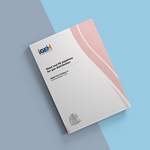IGEM/TD/3 Edition 5 +A: 2015 - Steel and polyethylene (PE) pipelines for gas distribution

This standard gives requirements for design, construction, inspection, testing, operation and maintenance of steel and polyethylene (PE) pipelines for the distribution of dry natural gas, predominantly methane, with or without odorisation, and liquefied petroleum gas (LPG).
Specifically, this document details:
-
Legal considerations such as land rights, environmental protection and noise control
-
Design process, including material selection, routeing, safety precautions, water crossings and above-ground installations
-
Construction, including planning, excavation, pipe laying and jointing, corrosion prevention and anchorage
-
Testing methods and criteria, maintenance of test records and de-commissioning of pipelines
-
Alterations and connections to existing, live pipelines
-
Maintenance and repair methodologies, including inspection and surveillance methods.
-
Additional considerations when working with LPG.
Introduction
1.1 Recommendations on distribution mainlaying were first published by the Institution of Gas Engineers (IGE) in 1956 as Communication 491.
Recommendations superseding Communication 491 were published progressively in 1966 (Communication 734), 1977 (Communication 967), 1983 (Communication 1203), 1992 (Communication 1514) and 2003 (Communication 1677).
This Standard revises and supersedes IGEM/TD/3 Edition 5 (Communication 1770 which is now obsolete).
1.2 This Standard has been drafted by a Panel appointed by the Institution of Gas Engineers and Managers’ (IGEM’s) Gas Transmission and Distribution Committee, subsequently approved by that Committee and published by the authority of the Council of the Institution.
1.3 This Standard applies to the design, construction, inspection, testing, operation and maintenance of pipelines designed after the date of publication. Hence, all new pipelines and diversions, as well as modifications of existing pipelines, should be in accordance with this edition.
Existing pipelines that comply with IGE/TD/3 Editions 1, 2, 3 or 4 may continue to be operated in accordance with the respective edition, although surveillance, inspection and maintenance may be undertaken in accordance with Edition 5. Operating conditions are not allowed to pass outside the limits of Edition 1, 2, 3 or 4, as appropriate, unless the new conditions are consistent with Edition 5.
1.4 Significant amendments have been made compared to the fourth Edition. These include:
- updating from recommendations to a Standard
- competency requirements
- reviewing and updating of the legislation section
- information for pipelines operating above 20°C
- revised proximity distances for PE pipelines
- additional guidance for concrete slabbing
- updated testing requirements
- pigging requirements
- additional advice when using squeeze-off equipment adjacent to leaking or suspect fusion joints
- minimum distances between fittings and squeeze-off of polyethylene (PE) pipe.
1.5 This Standard makes use of the terms “must”, “shall” and “should” when prescribing particular requirements. Notwithstanding Sub-Section 1.8:
- the term “must” identifies a requirement by law in Great Britain (GB) at the time of publication
- the term “shall” prescribes a requirement which, it is intended, will be complied with in full and without deviation
- the term “should” prescribes a requirement which, it is intended, will be complied with unless, after prior consideration, deviation is considered to be acceptable.
1.6 Engineering requirements are set out for the safe design, construction, inspection, testing, operation and maintenance of pipelines in accordance with current knowledge.
This Standard is intended to protect from possible hazards members of the public and those who work with pipelines as well as the environment, so far as is reasonably practicable. They are also intended to ensure that security of gas supply is maintained.
1.7 This Standard is applicable to conditions normally encountered in the distribution of gas. Additional design considerations may be necessary where unusual conditions are encountered, for example unstable ground (including the possibility of mining subsidence), mechanical or sonic vibrations, long self-supported spans, massive special attachments or thermal forces other than seasonal.
1.8 Notwithstanding Sub-Section 1.5, this Standard does not attempt to make the use of any method or specification obligatory against the judgement of the responsible engineer. Where new and better techniques are developed and proved, they should be adopted without waiting for modification of this Standard. Amendments to this Standard will be issued when necessary and their publication will be announced in the Journal of the Institution and other publications as appropriate.
1.9 The primary responsibility for compliance with legal duties rests with the employer. The fact that certain employees, for example “responsible engineers”, are allowed to exercise their professional judgement does not allow employers to abrogate their primary responsibilities. Employers must:
(a) have done everything to ensure, so far as is reasonably practicable, that there are no better protective measures that can be taken other than relying on the exercise of professional judgement by “responsible engineers”.
(b) have done everything to ensure, so far as is reasonably practicable, that “responsible engineers” have the skills, training, experience and personal qualities necessary for the proper exercise of professional judgement.
(c) have systems and procedures in place to ensure that the exercise of professional judgement by “responsible engineers” is subject to appropriate monitoring and review.
(d) not require “responsible engineers” to undertake tasks which would necessitate the exercise of professional judgement that is not within their competence. There should be written procedures defining the extent to which “responsible engineers” can exercise their professional judgement. When “responsible engineers” are asked to undertake tasks which deviate from this, they should refer the matter for higher review.
Note: The responsible engineer is a suitably qualified, competent and experienced engineer or a suitably qualified, competent and experienced person acting under his or her supervision, appointed to be responsible for the application of all or part of this Standard.
1.10 Materials and the techniques of construction and operation are constantly being improved and it is intended to keep this Standard under review.
1.11 It is now widely accepted that the majority of accidents in industry generally are in some measure attributable to human as well as technical factors. People who initiated actions that caused or contributed to accidents might have acted in a more appropriate manner to prevent them.
To assist in the control of risk and proper management of these human factors, due cognisance should be taken of HSG48.
1.12 Requests for interpretation of this Standard in relation to matters within their scope, but not precisely covered by the current text, may be addressed to Technical Services, IGEM, IGEM House, High Street, Kegworth, Derbyshire, DE74 2DA, email, [email protected] and will be submitted to the relevant Committee for consideration and advice, but in the context that the final responsibility is that of the engineer concerned. If any advice is given by or on behalf of IGEM, this does not imply acceptance of any liability for the consequences and does not relieve the responsible engineer of any of his or her obligations.
1.13 IGEM has adopted the terms and definitions used in European standards for pressure i.e. maximum operating pressure (MOP), operating pressure (OP), maximum incidental pressure (MIP) and strength test pressure (STP). Figure 1 explains these terms. Further guidance can be found in IGEM/TD/13.
1.14 This Standard was published in October 2015.

Scope
2.1 This Standard covers the design, construction, inspection, testing, operation and maintenance of steel and polyethylene (PE) pipelines for the distribution of dry Natural Gas (NG) (predominantly methane) (with or without odorisation) and Liquefied petroleum gas (LPG). It also covers modification and connection to existing pipeline systems.
Note: Consistent with European Standards, IGEM now defines pipeline type by specific pressure limits, rather than using such terms as “high, intermediate, medium and low pressure”. In general, it also strives to avoid using the terms “distribution main” and “service” but, in the UK, these are terms still in common use. In general, this Standard applies to pipelines of MOP not exceeding 16 bar and which are not “services” as defined by IGE/TD/4.
In most cases, this will mean IGE/TD/4 will apply between the "distribution main" as covered by IGE/TD/3 and the emergency control valve (ECV) denoting the end of the gas supply network. IGEM/G/1 provides extensive definitions with respect to the end of a gas supply network.
2.2 For NG, this Standard covers pipelines operating at MOP not exceeding 10 bar for PE and not exceeding 16 bar for steel and at a temperature from 0ºC to 20ºC inclusive for PE and -25ºC to 40ºC inclusive for steel. For LPG, this Standard limits MOP to 2 bar in the LPG vapour phase.
Note 1: This Standard does not specifically cover the construction of pipelines of other materials. However, Section 9 (operation and maintenance) does include requirements on the maintenance of iron systems.
Note 2: When any new material, for example ductile PVC, PEX (cross linked polyethylene), reinforced thermoplastic pipe materials, etc. is to be used, a structured methodology is required to establish that its use is acceptable. Engineers may consider alternatives brought about by advances in technology and proven concepts (see Sub-Section 1.8).
Note 3: For PE pipelines operating above 20°C the effect of fatigue impact will need to be accounted for in the design. Guidance is given in this Standard.
2.3 This Standard covers the predominantly underground network of pipes that distribute gas from a pipeline used for gas transmission, central LPG storage facility or gas production plant, service or services supplying domestic, commercial and industrial premises.
Note 1: Steel pipelines for high pressure gas transmission (MOP exceeding 16 bar and not exceeding 100 bar) are covered in IGEM/TD/1 and services are covered in IGE/TD/4. Additional advice for gas supplies to multi-occupancy buildings is given in IGEM/G/5.
Note 2: UKLPG Code of Practice 22 covers LPG service pipework not exceeding 63 mm diameter and installation volume not exceeding 0.02 m3. IGE/TD/4 covers LPG service pipework where the diameter exceeds 63 mm or where the installation volume exceeds 0.02 m3. IGEM/TD/3 covers LPG distribution systems supplying service pipework.
Note 3: Pressure regulating installations (PRIs) are covered in IGEM/TD/13.
2.4 This Standard applies to pipelines laid between points on land, including water crossings. For pipelines of which any part is offshore, additional or alternative guidance may be required for the offshore section. However, many of the recommendations will be valid.
Note: Offshore pipelines are those that are on the seaward side of the low water mark or special boundaries drawn at bays and estuaries.
2.5 All pressures quoted are gauge pressures unless otherwise stated.
2.6 Italicised text is informative and does not represent formal requirements.
2.7 Appendices are informative and do not represent formal requirements unless specifically referenced in the main sections via the prescriptive terms “must”, “shall” or “should”.
